
Thysanoplusia orichalcea, the slender burnished brass, is a moth of the family Noctuidae. The species was first described by Johan Christian Fabricius in 1775. It is a polyphagous pest of vegetable crops that originated in Indonesia, from where it spread to Europe, South Asia, India, Sri Lanka, Africa, Australia and New Zealand. In northern Europe it is a migrant species.

Chersotis is a genus of moths of the family Noctuidae.

Cryphia is a genus of moths of the family Noctuidae. The genus was erected by Jacob Hübner in 1818.

Syngrapha rectangula, the salt and pepper looper or angulated cutworm, is a moth of the family Noctuidae. The species was first described by William Kirby in 1837. It is found in North America from Newfoundland, Quebec, northern Ontario to Manitoba, New Jersey, northern Pennsylvania, southern Michigan, northern Wisconsin, North Carolina, Virginia, British Columbia, Alberta, Montana, northern Idaho and the Cascades.

Chersotis cuprea is a moth of the family Noctuidae.

Chersotis multangula is a moth of the family Noctuidae. It is found in the mountainous areas of Central and Southern Europe, Morocco, Turkey, Armenia, Iran, Syria, Lebanon and the Caucasus.
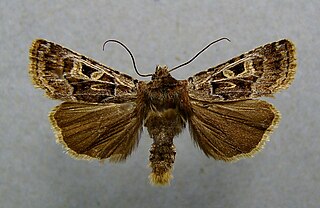
Chersotis ocellina is a moth of the family Noctuidae. It is found in the mountainous areas of Europe, especially in the Alps, the Apennine Mountains, Pyrenees and the Cantabrian mountains.
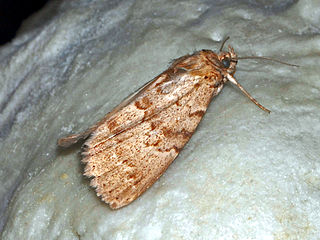
Apopestes spectrum is a species of moth in the family Erebidae first described by Eugenius Johann Christoph Esper in 1787.
Chersotis elegans is a moth of the family Noctuidae. It is found in the mountains of Spain, Greece, Turkey, the Caucasus, Lebanon, Israel and western central Asia.

Chersotis fimbriola is a moth of the family Noctuidae. It is found in number of isolated populations from Austria to Spain, Morocco, Turkey, Iraq, Iran and Turkmenistan.
Chersotis laeta is a moth of the family Noctuidae. It is found in number of isolated populations from Greece to the Caucasus, Turkey, Lebanon, Israel and Syria.
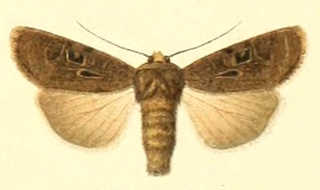
Chersotis andereggii is a moth of the family Noctuidae.

Chersotis larixia is a moth of the family Noctuidae. It is found in Spain, France, Switzerland, Italy and Sicily, Crete, Turkey, and east to Armenia, Azerbaijan, Syria, Iran, Lebanon, and Turkmenistan. In Europe, it is found in mountainous regions, like the Pyrenees, the Alps, and the Maritime Alps, up to heights of 2,000 meters.
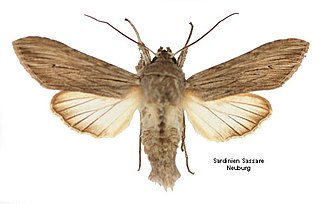
Cucullia tanaceti is a moth of the family Noctuidae. The species was first described by Michael Denis and Ignaz Schiffermüller in 1775.
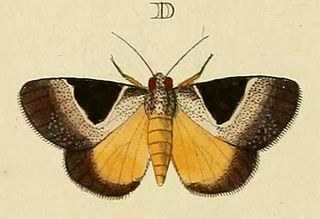
Dichromia sagitta is a moth of the family Erebidae first described by Johan Christian Fabricius in 1775. It is found in India, Macau, Hong Kong, Japan and Taiwan.

Tripudia rectangula is a moth in the family Noctuidae. It is found in North America, where it has been recorded from Alabama, Florida, Georgia, Illinois, Indiana, Iowa, Louisiana, Maryland, Mississippi, North Carolina, Ohio, Oklahoma, South Carolina and Tennessee.
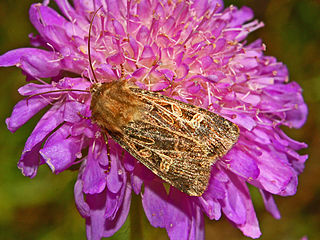
Chersotis alpestris is a moth of the family Noctuidae.

Oligia dubia is a species of moth belonging to the family Noctuidae.
Noctuini is a tribe of owlet moths in the family Noctuidae. There are at least 520 described species in Noctuini.
Chersotis juncta, known generally as the stirrup dart moth or spear dart moth, is a species of cutworm or dart moth in the family Noctuidae. It is found in Europe and Northern Asia and North America.
















